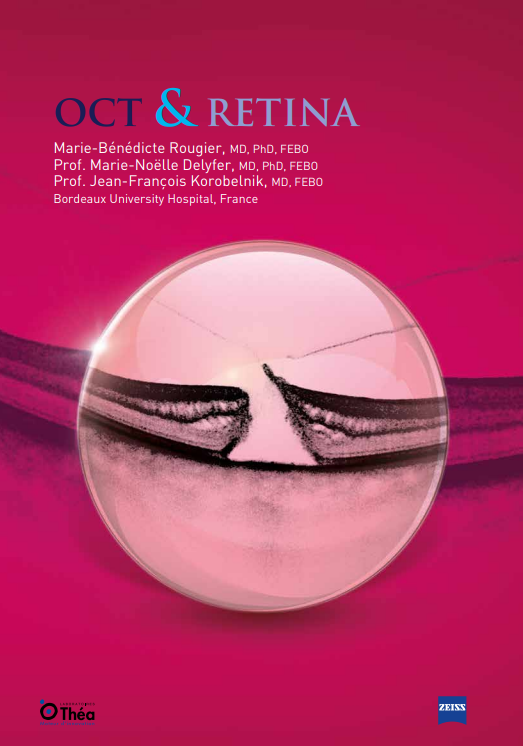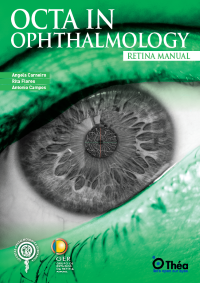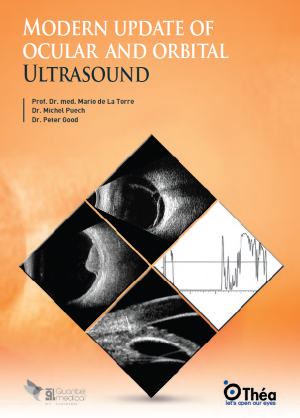
Optical Coherence Tomography (OCT) has revolutionized retinal diagnostics over the past 15 years. Through advancements such as Time-Domain OCT (TD-OCT) and Spectral-Domain OCT (SD-OCT), this technology has become accessible to a large number of centers and physicians worldwide. These developments have significantly improved the diagnosis and follow-up of macular diseases, driven by substantial advancements in treatments, especially with the arrival of corticosteroids and anti-VEGF administered by intravitreal (IVT) injections. With nearly a decade of widespread IVT use and seven years since the introduction of SD-OCT, the field continues to evolve, offering a clearer and more detailed understanding of retinal pathologies.
OCT works by using light waves to capture micrometer-resolution, three-dimensional images from within biological tissues. It is analogous to ultrasound imaging, except it uses light instead of sound. The non-invasive nature of OCT, combined with its high-resolution imaging capabilities, has made it an indispensable tool in ophthalmology, particularly for the diagnosis and management of retinal diseases. The development of OCT technology has allowed for the visualization of retinal structures that were previously difficult or impossible to observe in a non-destructive manner.
The vitreoretinal interface is a critical zone where the vitreous humor interacts with the surface of the retina. Pathologies in this interface can lead to significant visual disturbances. Conditions such as vitreomacular traction, macular holes, and epimacular membranes are among those that can be precisely diagnosed and monitored using OCT. For example, vitreomacular traction can be identified by the hyperreflective posterior hyaloid remaining attached to the macula, causing foveal elevation and microcysts. Macular holes, categorized into stages, show detailed structural changes on OCT images, such as the break in the cyst roof and the adhesion of the posterior hyaloid at the hole’s edge. These insights facilitate targeted treatments and better patient outcomes.
Vitreomacular traction syndrome (VMTS) is an example where OCT plays a crucial role in diagnosis and management. VMTS occurs when the vitreous gel adheres too strongly to the macula, causing traction. This can lead to visual distortions and, if untreated, may progress to macular holes. OCT imaging in VMTS shows the elevation of the central macula and the formation of cystic spaces within the retina. The detailed images provided by OCT allow clinicians to monitor the progression of VMTS and determine the appropriate timing for surgical intervention.
Macular holes are another condition where OCT is invaluable. Macular holes are full-thickness defects in the central retina, which can lead to significant vision loss. OCT imaging provides a clear view of the stages of macular hole formation and the surrounding retinal architecture. This information is critical for planning surgical repair and monitoring postoperative recovery. OCT can also detect early changes in the vitreoretinal interface that may indicate the potential for macular hole development, allowing for early intervention to prevent progression.
En-face OCT provides a unique perspective by offering a coronal view of the retina, allowing for the analysis of retinal structures in a plane parallel to the surface. This technique is particularly valuable in visualizing the distribution of retinal layers and identifying pathologies that may not be as apparent in cross-sectional views. It enhances the ability to correlate OCT images with clinical examinations and other imaging modalities such as fluorescein angiography and autofluorescence retinal imaging. The En-face OCT images reveal detailed sections, such as the petaloid appearance of cystoid macular edema, and help in understanding the spatial distribution of retinal changes.
En-face OCT is especially useful in the evaluation of macular diseases. For instance, in diabetic macular edema (DME), En-face OCT can reveal the presence of fluid in different retinal layers and its distribution across the macula. This information is vital for tailoring treatment strategies, such as focal laser therapy or intravitreal injections, to target the specific areas of fluid accumulation. By providing a comprehensive view of the macula, En-face OCT allows for a more precise assessment of disease severity and response to treatment.
Another application of En-face OCT is in the assessment of epiretinal membranes (ERMs). ERMs are fibrocellular proliferations on the inner surface of the retina that can cause visual distortion and reduced vision. En-face OCT can visualize the extent and topography of ERMs, helping to determine the impact on retinal structure and function. This information is valuable for surgical planning, as it allows for a detailed map of the membrane’s location and its effect on the underlying retina. En-face OCT can also be used to monitor the progression of ERMs and assess the outcomes of surgical removal.
Macular pathologies present distinct patterns on OCT images, aiding in their diagnosis and management. Diabetic macular edema, for instance, can be characterized by intraretinal cystic cavities and hyperreflective exudates. Age-related macular degeneration (AMD) reveals various forms such as serous drusen, reticular drusen, and cuticular drusen, each with specific OCT signatures. Atrophic AMD shows thinning of the outer retina and increased reflectivity of underlying tissues, while neovascular AMD features exudative changes such as pigment epithelial detachment (PED) and subretinal fluid. Understanding these patterns allows for early detection, monitoring of disease progression, and timely intervention.
For example, in diabetic macular edema (DME), OCT imaging reveals intraretinal fluid accumulation and cystoid spaces. These findings are indicative of the breakdown of the bloodretinal barrier and increased vascular permeability. The identification of these specific OCT patterns helps clinicians to determine the severity of DME and to tailor treatment plans accordingly. OCT is also used to monitor the response to treatments such as anti-VEGF injections, allowing for adjustments in therapy based on the reduction of fluid and improvement in retinal thickness.
In age-related macular degeneration (AMD), OCT is instrumental in differentiating between the atrophic (dry) and neovascular (wet) forms of the disease. Atrophic AMD is characterized by the progressive thinning and loss of the retinal pigment epithelium (RPE) and photoreceptors, which is visible on OCT as areas of increased reflectivity and loss of retinal layers. In contrast, neovascular AMD is marked by the presence of choroidal neovascularization (CNV), which results in subretinal fluid, PED, and intraretinal cysts. The precise identification of these features on OCT is critical for guiding treatment decisions, such as the use of anti-VEGF therapy to target CNV.
The integration of OCT into clinical practice has immensely enhanced the diagnosis and management of retinal diseases. By providing detailed images of retinal structures and facilitating the correlation with clinical findings, OCT has become an indispensable tool for ophthalmologists. The continuous advancements in OCT technology and its widespread accessibility have transformed retinal diagnostics, leading to improved patient care and outcomes. As we continue to explore the depths of retinal imaging, the insights gained from OCT will undoubtedly pave the way for further innovations and advancements in the field of ophthalmology.
In conclusion, the use of OCT in retinal diagnostics has provided unprecedented insights into the structure and function of the retina. The ability to visualize retinal layers in high resolution has improved our understanding of various retinal diseases and their pathophysiology. OCT has become a cornerstone in the management of conditions such as DME, AMD, and VMTS, allowing for early detection, precise diagnosis, and tailored treatment strategies. As OCT technology continues to evolve, we can expect further enhancements in imaging capabilities, leading to even greater improvements in patient care. The future of retinal diagnostics is bright, with OCT at the forefront of innovation and clinical practice.


